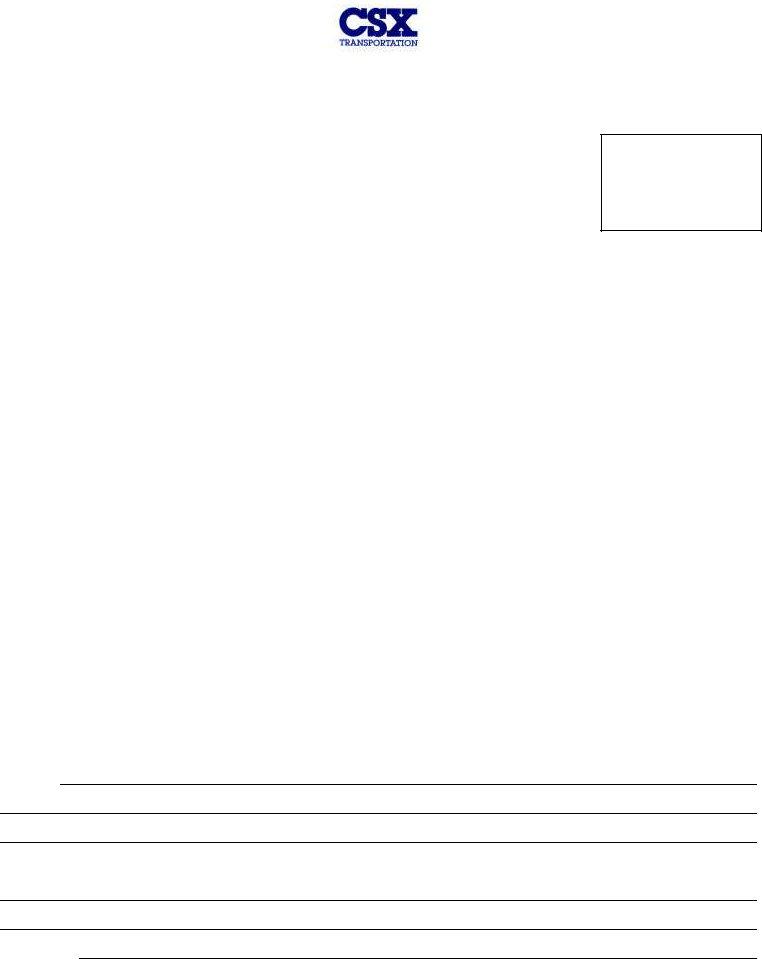Ensuring a safe and efficient return to work after an employee has suffered from an illness or injury is paramount for both the employee's well-being and the employer's operational productivity. The MD 3 RRM form, integral to this process, serves as a comprehensive tool to facilitate this transition. Originating from the Medical Department in Jacksonville, Florida, this form is a critical piece of documentation that must be completed by the attending physician when an employee is deemed ready to resume work duties. It encompasses a wide range of information, including an employee's medical history, diagnostic findings, the treatment administered, and an insightful prognosis. Furthermore, it assesses whether the returning employee can perform their assignment safely without posing any direct threat to themselves or others, considering any necessary work restrictions or accommodations. This form also includes specific additional instructions for certain diagnoses, ensuring a thorough evaluation for cases involving heart disease, diabetes mellitus, seizure disorders, disturbances of consciousness, or substance abuse, thereby requiring detailed information about the employee's condition and treatment plan. The attention to detail in the MD 3 RRM form underscores the importance of a well-considered approach to reintegrating employees into the workplace, balancing health concerns with job demands to support their successful and safe return to work.
| Question | Answer |
|---|---|
| Form Name | Form Md 3 Rrm |
| Form Length | 5 pages |
| Fillable? | No |
| Fillable fields | 0 |
| Avg. time to fill out | 1 min 15 sec |
| Other names | csx medical department phone number, rrm return medical, csx 3 attending, rrm form medical |

48059433661
Medical Department
P.O. 80X 40586
JACKSONVILLE, FLORIDA
(904)
OMNI FAX NO. (904)
ATTENDING PHYSICIAN'S RETURN TO WORK REPORT
FORM
REV.
MEDICAL DEPT. USE ONLY
To be completed and submitted only when an employee is released to return to work following injury or illness absence. Supervisor will complete top portion of form and give to employee for completion by his/her personal physician following an absence from work due to injury or illness.
|
EMPLOYEE LAST NAME, FIRST NAME, MIDDLE INITIAL |
|
|
|
|
|
|
|
DATE OF BIRTH |
PHONE NUMBER |
|
|||
|
|
|
|
|
|
|
|
|
|
|
|
|
( ) |
|
|
EMPLOYEE ADDRESS |
|
|
|
NUMBER AND STREET |
CITY AND STATE |
ZIP CODE |
|||||||
|
|
|
|
|
|
|
|
|
|
|
|
|
|
|
|
SOCIAL SECURITY NUMBER |
I.D. NUMBER |
|
|
|
|
|
|
|
EMPLOYEE OCCUPATION |
|
|||
|
|
|
|
|
|
|
|
|
|
|
|
|
||
|
DIVISION/SHOP/OTHER |
|
DEPARTMENT |
|
|
|
|
|
WORK LOCATION |
|
||||
|
|
|
|
|
|
|
|
|
|
|
|
|||
|
SUPERVISOR/EMPLOYING OFFICER (NAME) AND PHONE NO. |
|
|
|
|
|
||||||||
|
|
|
|
|
||||||||||
|
|
|
|
|
|
|
( |
|
) |
|
|
|||
|
|
|
|
|
|
|
|
|
||||||
LAST DAY WORKED: |
|
|
|
|
|
|
|
|
|
|
|
|
|
|
EMPLOYEE CLAIMS |
YES |
|
|
|
|
|
||||||||
|
|
|
|
|
NO |
|
|
|
|
|
||||
The above employee has reported that he/she has been under your professional care. To enable me to give consideration to his/her return to work, please complete the remaining portion of this report in entirety. Please call me collect if any clarification or discussion is desired.
Please return the completed form and all attachments to me at the address shown above. All information will be treated confidentially.
Chief Medical Officer
1.History:
2.Physical Findings (Please include B/P, visual acuity, blood sugar,
3.Diagnosis:
____________________________________________________________________________________________________________
____
(For certain diagnoses, i.e., heart disease, diabetes mellitus, seizure disorders, or disturbances of consciousness, substance abuse, or if the employee has been hospitalized or institutionalized, specific additional information is required. Please see page 3.)
Next Page Please

4. Treatment (please include dosage and frequency of any medication):
5. Will any medication employee is taking adversely affect alertness, coordination, judgement, vision or gait?
NO YES (Please check one)
If yes, please explain
6. Duration of Care: |
From |
|
To |
7. Prognosis:
Date of next visit (if any)
8.The employee is able to perform his/her assignment without posing a direct threat to his/her own safety or the safety of others: With no restrictions
With restrictions
(Whether a person poses a "direct threat" to himself/herself or others must be based on the most current medical knowledge and/or the best available objective evidence about this individual. There must be a significant current risk of substantial harm; the risk may not be speculative or remote. In reaching your conclusion, you should consider the duration of the risk, the nature and severity of the potential harm, the likelihood that the potential harm will occur, and the imminence of the potential harm. If you conclude that this person would pose a "direct threat" please provide us with the basis for your conclusion addressing the issues noted above.)
9.If you recommend any work restrictions, limitations, or accommodations, please specify.
10.If yes, in your opinion, how long will recommended work restrictions be in effect? .
Signat ure of Personal Physician |
Dat e |
Please Print or Type Name, Address, and Telephone Number of Personal Physician Beneath his Signature
ADDITIONAL INSTRUCTIONS FOR CERTAIN DIAGNOSES NAMED IN ITEM 3.
If any of the conditions named below apply, please provide the additional information requested below, attaching additional sheets as necessary.
If employee is suffering from heart disease: copy of results of recent electrocardiographic stress test (if not already performed, should be performed if not clinically contraindicated and results provided at employee's expense); copy of results of Holter monitoring (if not already performed, should be performed if any evidence of arrhythmia on physical examination, stress test or otherwise, and results provided at employee's expense); copy of results of any other specialized laboratory testing that may have been performed.
If employee is suffering from diabetes mellitus: diet prescribed; frequency, nature and severity of any symptomatic hypoglycemic or hyperglycemic episodes or reactions in the past six months, results of fasting blood sugar and glycosylated hemoglobin (hemoglobin A1C) determination performed within the last thirty (30) days (if not already shown in Item 3, above); state of employee's compliance with treatment regimen; frequency of employee's visits to you for monitoring and nature of any employee
If employee is suffering from seizure disorder or disturbance of consciousness: frequency, nature and severity of any seizures or disturbances of consciousness in past one year; results of recent neurological examination; results of any specialized laboratory tests (e.g., EEG, brain scan, blood levels or medications, etc.) that may have been performed; state of employee's compliance with treatment regimen; frequency of employee's visits to you for monitoring.
If employee is suffering from substance abuse: copy of results of any recent blood alcohol determinations and urine drug screening; details of rehabilitation and recovery plan; nature, extent and severity of any complications of substance abuse.